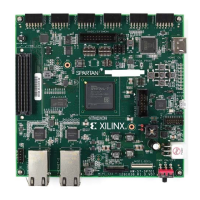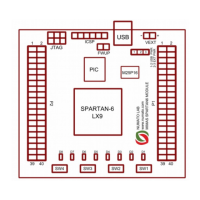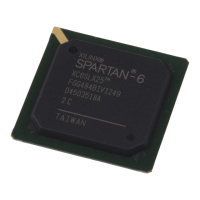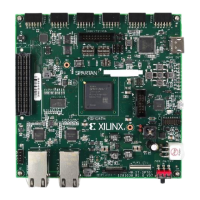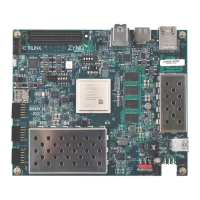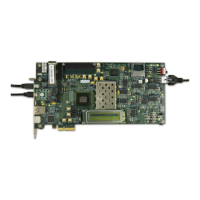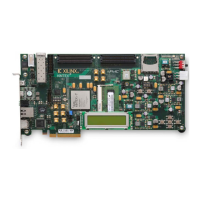118 www.xilinx.com Spartan-3E Starter Kit Board User Guide
UG230 (v1.0) March 9, 2006
Chapter 15:
Expansion Connectors
R
Using Differential Inputs
LVDS and RSDS differential inputs require input termination. Two options are available.
The first option is to use external termination resistors, as shown in Figure 15-3a. The
board provides landing pads for external 100Ω termination resistors. The resistors are not
loaded on the board as shipped. The resistor reference designators are labeled on the
silkscreen, as listed in Table 15-2. The landing pads are located on both the top- and
bottom-side of the board, between the FPGA and the FX2 connector. The resistors are not
loaded on the board as shipped. External termination is always required when using
differential input pairs 15 and 16.
The second option, shown in Figure 15-3b, is a Spartan-3E feature called on-chip
differential termination, which uses the DIFF_TERM attribute available on differential I/O
signals. Each differential I/O pin includes a circuit that behaves like an internal
termination resistor of approximately 120Ω. On-chip differential termination is only
available on I/O pairs, not on Input-only pairs like pairs 15 and 16 in Table 15-2.
Figure 15-4 and Figure 15-5 show the locations of the differential input termination resistor
landing pads on the top and bottom side of the board. Table 15-2 indicates which resistor is
associated with a specific differential pair.
Figure 15-3:
Differential Input Termination Options
Figure 15-4:
Location of Termination Resistor Pads on Top Side of Board
LxxN_0
LxxP_0
Signal
LxxN_0
LxxP_0
Signal
Pads for 100Ω
surface-mount resistor
Differential termination
(~120Ω)
a) External 100Ω termination resistor
b) On-chip differential termination
FPGA
FPGA
UG230_c12_03_022406
PA D PA D
UG230_c12_04_022406

